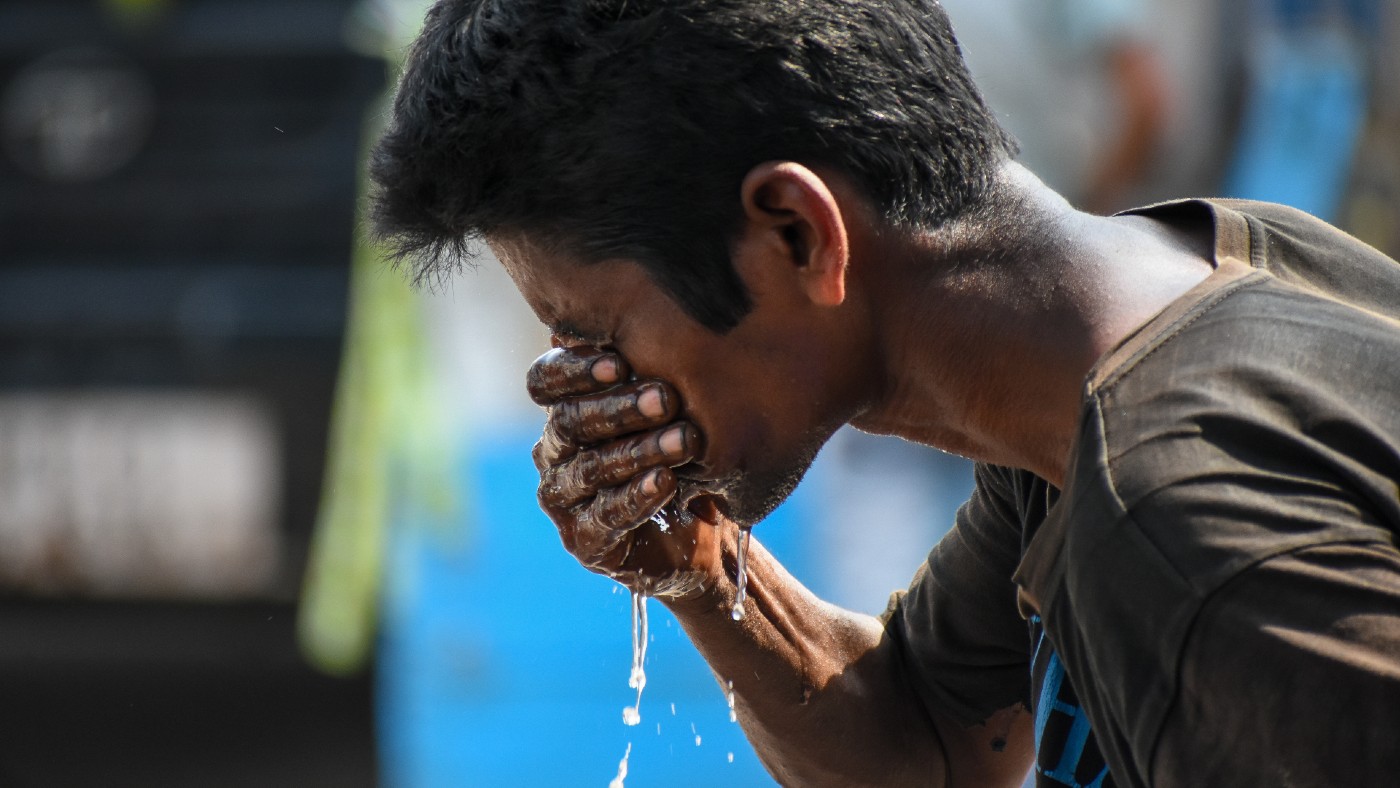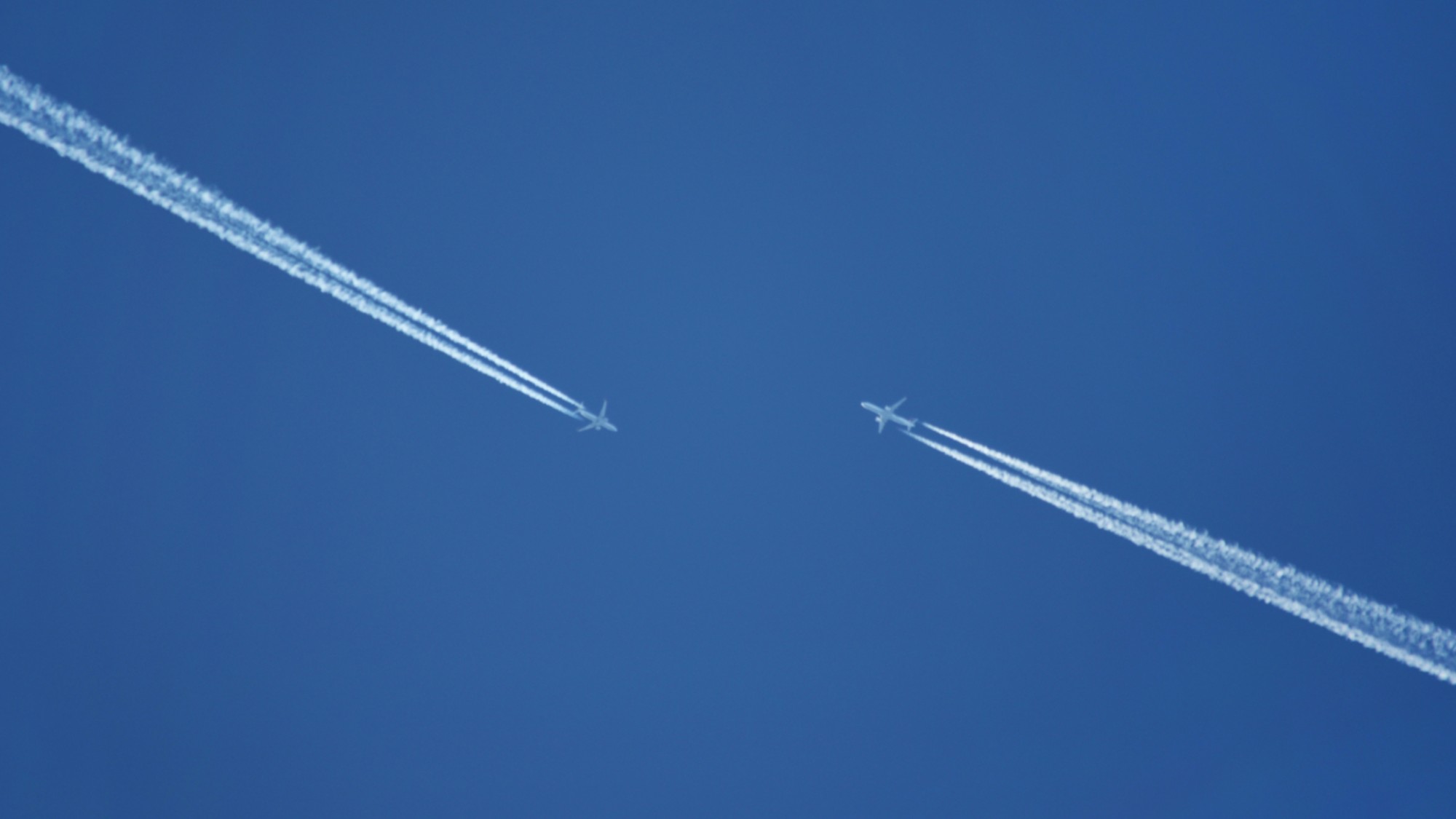The ‘wet bulb’ temperatures behind unprecedented heatwaves
Heat and humidity combine to create deadly conditions that will only get more common

Scientists are warning that “wet-bulb” conditions could threaten the ability of humans to survive as extreme temperatures become more commonplace.
Across great swathes of the Indian subcontinent in April and May temperatures hit 45C, damaging harvests and leading to mass cases of heatstroke. It even caused the lights to flicker in some cities amid surging demand for air-conditioning, reported The New York Times.
What does wet-bulb temperature mean?
Wet-bulb temperatures account for both heat and humidity, unlike the more standard temperature measurement common in weather reports.
The Week
Escape your echo chamber. Get the facts behind the news, plus analysis from multiple perspectives.

Sign up for The Week's Free Newsletters
From our morning news briefing to a weekly Good News Newsletter, get the best of The Week delivered directly to your inbox.
From our morning news briefing to a weekly Good News Newsletter, get the best of The Week delivered directly to your inbox.
It was originally measured by wrapping a wet cloth around the bulb of a thermometer and exposing it to air, but can perhaps most intuitively be thought of as a representation of “how effectively a person sheds heat by sweating”, reported Vice.
When there is too much moisture in the air and humidity is combined with high heat (31C or higher), the body cannot perform one of its primary cooling functions: sweating.
It is the reason that dry heat is commonly thought of as more comfortable than humid heat. “Such conditions can be fatal, and they’re happening earlier than anticipated,” said Insider.
Colin Raymond, of Nasa’s Jet Propulsion Laboratory in southern California, who led a landmark 2020 study on extreme heat and humidity, said the highest wet-bulb temperature that humans can survive when exposed to the elements for at least six hours is about 35C.
A free daily email with the biggest news stories of the day – and the best features from TheWeek.com
Described by NBC News as “an esoteric measurement that was little known outside meteorology circles until now”, high wet-bulb temperatures could threaten the ability of humans to survive.
Which regions are most at risk?
Raymond’s study of wet-bulb temperatures published in Science Advances in 2020 found that some places on Earth have already experienced conditions too hot and humid for human survival.
Since 2005, wet-bulb temperature values above 35C have occurred for short periods of time on nine separate occasions in a few subtropical regions like Pakistan and the Persian Gulf.
It follows last June’s record heatwave that caused havoc across the Pacific Northwest. Southeastern states have also reported multiple incidences of wet-bulb temperatures at or above 31C in recent years, while parts of Arizona and California have reported wet-bulb temperatures as high as 35C.
Why is it likely to get worse?
As the globe warms and bodies of water evaporate at higher rates than before, raising humidity levels, “wet bulb temperatures will continue to rise”, said The Washington Post.
“Heat waves are the deadliest form of natural disaster,” said Vice, and like many other effects of global warming, “typically place socially vulnerable populations at disproportionate risk”.
A 2021 study published in Geophysical Research Letters said that in Bangladesh, India and Pakistan more than 3.3 billion people have experienced days where the wet-bulb temperature is above 35C – “and these rates are only going to compound under current warming goals”, said Vice.
According to Nasa, climate models predict that the areas most at risk of excessive wet-bulb temperatures in the next 30 to 50 years include South Asia, the Persian Gulf, and the Red Sea by around 2050; and Eastern China, parts of Southeast Asia, and Brazil by 2070.
-
 Crest falling: Mount Rainier and 4 other mountains are losing height
Crest falling: Mount Rainier and 4 other mountains are losing heightUnder the radar Its peak elevation is approximately 20 feet lower than it once was
-
 Death toll from Southeast Asia storms tops 1,000
Death toll from Southeast Asia storms tops 1,000speed read Catastrophic floods and landslides have struck Sri Lanka, Indonesia, Thailand and Malaysia
-
 Can for-profit geoengineering put a pause on climate change?
Can for-profit geoengineering put a pause on climate change?In the Spotlight Stardust Solutions wants to dim the sun. Scientists are worried.
-
 How will climate change affect the UK?
How will climate change affect the UK?The Explainer Met Office projections show the UK getting substantially warmer and wetter – with more extreme weather events
-
 Can the UK do more on climate change?
Can the UK do more on climate change?Today's Big Question Labour has shown leadership in the face of fraying international consensus, but must show the public their green mission is ‘a net benefit, not a net cost’
-
 Did Cop30 fulfil its promise to Indigenous Brazilians?
Did Cop30 fulfil its promise to Indigenous Brazilians?Today’s Big Question Brazilian president approves 10 new protected territories, following ‘unprecedented’ Indigenous presence at conference, both as delegates and protesters
-
 Can the world adapt to climate change?
Can the world adapt to climate change?Today's Big Question As the world gets hotter, COP30 leaders consider resilience efforts
-
 Taps could run dry in drought-stricken Tehran
Taps could run dry in drought-stricken TehranUnder the Radar President warns that unless rationing eases water crisis, citizens may have to evacuate the capital


